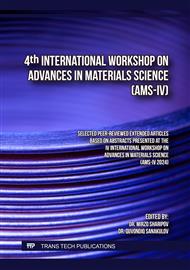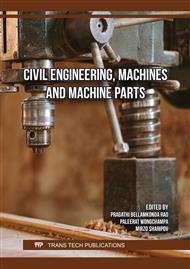p.3
p.11
p.19
p.27
p.33
p.39
p.49
p.61
p.69
Enhancing Machine Tool Housing Design through Ultra High-Performance Concrete
Abstract:
Machine tool housing design is pivotal in optimizing manufacturing processes, focusing on functionality, ease of assembly, and alignment precision. Current materials face challenges in static, dynamic, and thermal behaviors, impacting machining quality. The properties of ultra high-performance concrete (UHPC) such as high strength, low porosity, and corrosion resistance make it ideal for machine tool applications, promising increased precision and efficiency while reducing material costs and labor. Its recyclability adds environmental benefits. Incorporating UHPC in machine tool structures, including hybrid materials like Carbon Fiber Reinforced Plastic (CFRP), achieves superior static, dynamic, and thermal stability. Experimental results demonstrate UHPC’s compressive strengths (17,000-22,000 psi), surpassing conventional materials, and its ability to enhance machine tool performance and sustainability. This research highlights UHPC as a transformative material for resilient, precise, and eco-friendly manufacturing solutions.
Info:
Periodical:
Pages:
33-37
Citation:
Online since:
December 2024
Price:
Сopyright:
© 2024 Trans Tech Publications Ltd. All Rights Reserved
Share:
Citation:



